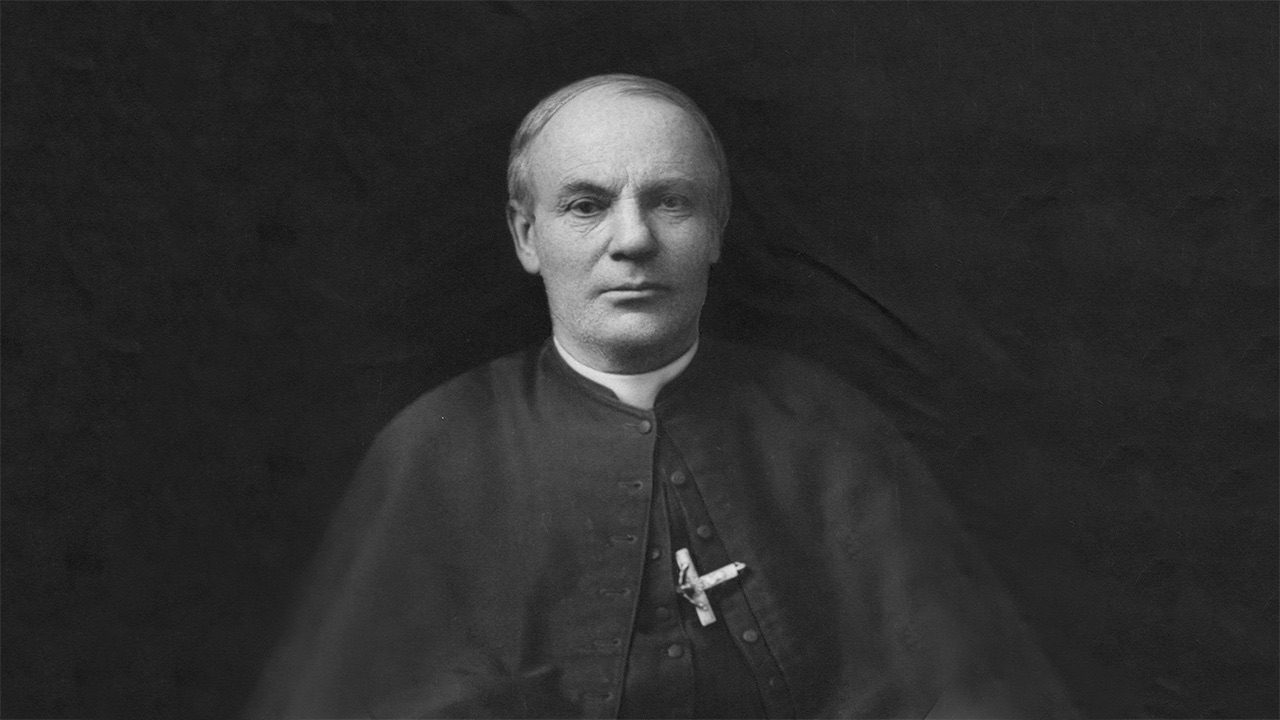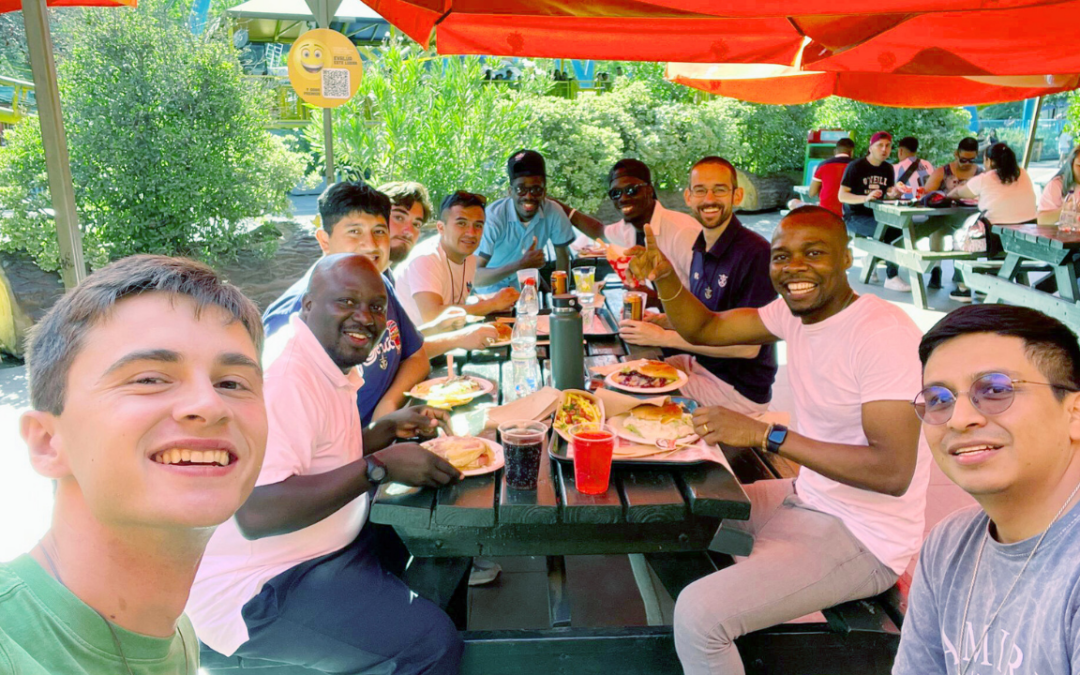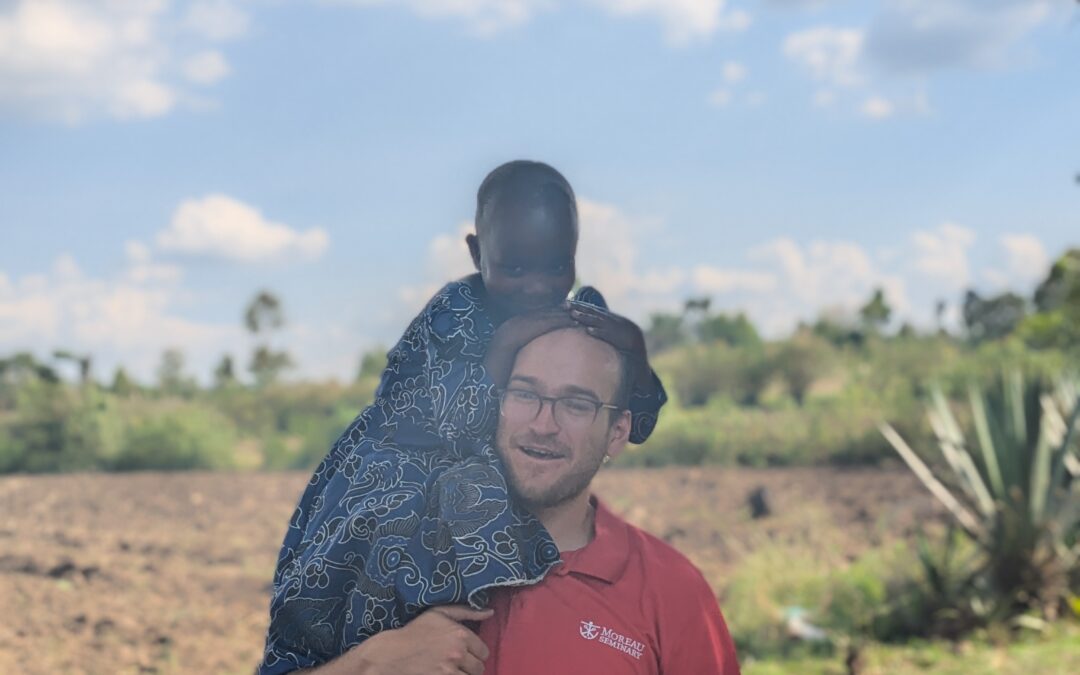E Pluribus Unum — “One out of many” — is an epithet the United States sometimes uses to describe itself as a nation made up of many different ethnic groups and tribes. It can also be used to describe the Congregation of Holy Cross as a religious community composed of members from a variety of ethnic groups and tribes.
When the first seven Holy Cross religious, all of whom were French, came to the United States in 1841, and established themselves in Indiana, they began to recruit new members from among the Irish and German immigrants who had settled in the area. But in 1873 a young Polish immigrant, Valentine Czyzewski, joined the community — the first person of Polish descent to do so. Ordained in 1877, he was immediately assigned to organize a parish for the growing number of Polish immigrants in the South Bend area of northern Indiana.
By the end of 1877, with the help of a building society organized by parishioners, a wooden church had been constructed and a nearby building had been purchased as a parochial school. The parish was named St. Hedwig. Other Polish-Americans who had become Holy Cross brothers and sisters eventually took over the staffing of the school. By 1896, with over a thousand students, it was the largest school in the diocese and the parish boasted an imposing brick church.
In 1884, Czyzewski began to be a circuit riding pastor and to visit Polish families on their farms west of South Bend. In 1884, another Polish parish, St. Stanislaus Kostka, was built for them at Terre Coupée. Czyzewski’s assistant, Fr. Antony Zubowicz, a newly ordained Holy Cross priest, was assigned as its pastor. Another parish was established for the Polish families in Rolling Prairie, at the western end of the county.
Invited to Chicago in 1892 to mediate a dispute between Lithuanian parishioners and the pastor of a large Polish parish, Czyzewski, who spoke Lithuanian, persuaded the Lithuanians to establish a separate parish in another part of the city. In 1893, when some Polish immigrants threatened a schism with the same Polish parish, a Vatican delegation invited Czyzewki to mediate the dispute, and he persuaded the dissidents to organize a new parish, Holy Trinity, and sent them his cousin from Poland, Casimir Sztuczko, C.S.C., to be their pastor — a position which he held for fifty-six years.
By 1900, there were over 12,000 Poles in South Bend and the need for a second Polish parish was evident. Czyzewski had organized a building committee among newer arrivals who lived at some distance from St. Hedwig’s. In 1899, St. Casimir’s parish opened on the south side of the city with Fr. Anthony Zubowicz as pastor. Brother Stanislaus, C.S.C., (Michael Kurowski) organized the parish school.
Yet another Polish parish, St. Stanislaus parish was opened in 1900 with Fr. Roman Marcinicak, C.S.C., as pastor. Marciniak was able to get the Sisters of the Holy Family of Nazareth, a Polish community, to staff the parish school.
Czyzewski’s standing in the South Bend community was such that he enjoyed the confidence of both factory owners and their mostly Polish workers. In 1885, when a strike against the Oliver Corporation, a major employer in the area, threatened to become violent, Czyzewski was able to mediate between workers and management and violence was avoided.
By 1930 the Polish-American population of South Bend had grown to over 35,000 and they inhabited a distinctive area in the city, with neighborhood clusters around parish churches. Valentine Czyzewski, the architect of much of this growth, died in June 1913. His funeral was the largest that South Bend had ever seen. The funeral Mass was celebrated by Bishop Paul Rhode of Green Bay, Wisconsin, the first Polish-American bishop appointed in the United States. Representatives from various organizations throughout the country were in attendance, as was the mayor of South Bend and other civic officials. The funeral procession of carriages and mourners on foot was six miles long,
The story of Polish members of Holy Cross in the United States is unique because it can all be traced to one man, who was the first Polish-American vocation, who recruited relatives and friends to join the community and put Holy Cross at the service of the Polish immigrant community in the United States. The current superior general of the Congregation, Brother Paul Bednarczyk, CSC, is Polish-American.
Poles were only one ethnic group in Holy Cross in America. There were also members of French, German, Irish, Italian, Hungarian, Latino Vietnamese and native American descent, to name but a few. The Congregation of Holy Cross in the United States is truly E pluribus unum.
Published on October 4, 2023




